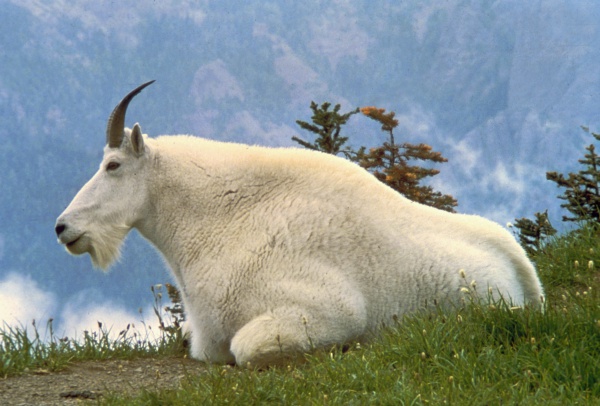Facts About Mountain goat
The mountain goat, also known as the Rocky Mountain goat, is an exceptional hoofed mammal indigenous to North America. Often found in subalpine to alpine regions, these creatures are renowned for their extraordinary climbing abilities on cliffs and icy surfaces. Contrary to what their name implies, mountain goats do not belong to the Capra genus, which includes other goat species such as wild and domestic goats. Instead, they are the sole extant species within the genus Oreamnos.
Mountain goats are members of the Bovidae family and fall under the Caprinae subfamily, suggesting they share a lineage with true goats, wild sheep, chamois, and muskoxen. Scientists estimate that mountain goats diverged from these relatives approximately 7.5 to 8 million years ago. Their evolutionary journey likely began in regions between Tibet and Mongolia, with some populations possibly migrating across the Bering Strait.
Physically, mountain goats are quite distinctive. Both males and females possess beards, short tails, and long black horns. Their woolly white coats, composed of two layers, enable them to withstand harsh weather conditions. Their feet are uniquely adapted for climbing, featuring cloven hooves and sharp dewclaws that provide excellent traction on steep and rugged slopes.
Mountain goats inhabit the Rocky Mountains, Cascade Range, and other parts of the Western Cordillera. They are found in various states and provinces, often residing above the tree line but migrating seasonally to meet their dietary and reproductive needs.
In terms of diet, mountain goats primarily graze on grasses, herbs, sedges, ferns, mosses, lichens, and shrubs. They follow seasonal movements to ensure adequate nutrition. Breeding occurs in late autumn, and after a six-month gestation period, the kids are born in spring. Female goats, known as nannies, are fiercely protective and can be quite aggressive in defending their young from predators.
Although mountain goats are not typically aggressive, they can exhibit territorial behavior towards humans and other animals. Within their herds, nannies often engage in dominance fights. Predators of mountain goats include wolves, wolverines, lynxes, bears, and mountain lions, and occasionally they must defend against predatory birds such as eagles.
While mountain goats have never been domesticated for their wool, indigenous peoples of the Pacific Northwest Coast traditionally used the wool they shed in spring for weaving. In the wild, these animals typically live for 12 to 15 years, with their lifespan often limited by tooth wear. However, in captivity, they can live up to 20 years.

 Pakistan
Pakistan